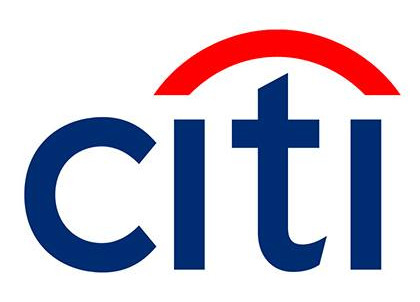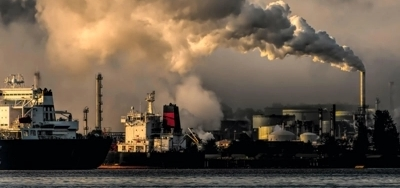Many new projects and carbon bombs would have not been possible without the support of banks that massively support fossil fuel projects and the companies behind them. Among the 65 largest banks, US$1.6 trillion have been allocated to the companies behind these projects between 2021 and 2024.
Banks
Banks can finance emissive projects through direct investments or by funding fossil fuel companies.
Companies
Each extraction project is owned by one or several fossil fuel companies. These companies are involved in the extraction of oil, gas and/or coal resources or detain LNG terminals.
Fossil fuel projects
A fossil fuel project is equivalent to Carbon Bombs, New Extraction Project, and New LNG. These terms describe the environmental impacts and risks associated with fossil fuel exploitation.
Carbon budget comparison
Carbon bombs and new extraction projects are pushing us beyond planetary limits.
To keep global warming below +1.5°C compared to pre-industrial levels, the world’s remaining carbon budget is now just 130 gigatonnes of CO₂.
Yet, the combined emissions from carbon bombs and new extraction projects total more than 1,400 gigatonnes - x11 the available budget*.
Pursuing these projects would lock humanity into irreversible climate breakdown and threatening the living conditions on Earth.
*The remaining carbon budget for a likelihood of 50% to stay under 1.5 °C (2.7 °F) is 130 gigatonnes CO2, source : climatechangetracker.org
130 Gt, is the total CO₂ we can ever emit , if we want to stay within the 1.5°C limit of the 2015 Paris Agreement
Project explanation
Carbon Bombs
Coal
375 Carbon Bombs
Oil & Gas
226 Carbon Bombs
New projects
Coal
364 New Projects
Oil & Gas
1,979 New Projects
Carbon Bombs
with Expansions
Beyond carbon bombs, a wave of new fossil fuel extraction projects accelerates the climate crisis.
Carbon bombs are mega fossil fuel extraction projects that will each generate over one gigatonne of CO₂ (1 GtCO₂) over their remaining lifetime. Our analysis looks at the 425 carbon bombs first identified in the 2020 study "Carbon Bombs - Mapping key fossil fuel projects" by Kjell Kühne, and tracks their development since then, and the apparition of new projects. We identified 176 additional "carbon bombs" bringing the total number to 601. Since carbon bombs were first identified and described as such in the public domain, oil and gas carbon bombs have alone emitted more than 54 Gt of CO₂. Nearly 30 new carbon bombs started operating between 2021 and 2025, and only 12 carbon bombs have been cancelled.
In addition, 1,979 new large oil & gas fields and 364 new large coal mines have been approved since 2021 and will start by 2050. We define “new extraction projects” as those reaching a final investment decision after 2021, the year when the IEA Net Zero scenario stated: “no need for investment in new fossil fuel supply in our net zero pathway”. Every extraction project (oil, gas and coal) launched after this date is therefore both harmful and unnecessary. That makes a total of 2,343 new fossil fuel extraction projects.
These projects are a priority to tackle as they mostly haven’t started yet, and are therefore easier to defuse.
The banks behind
Banks are key enablers of fossil fuel projects. Without their support, many of these projects would never materialize. Their primary method is corporate financing dedicated to companies owning these projects—through loans and bond or equity underwriting. Banks can also directly fund fossil fuel projects, however project financing accounts for just 4% of their total fossil fuel supports.
Although carbon neutrality pledges have been often taken, international banks have continued to funnel US$1.6 trillion to companies developing new fossil fuel projects or carbon bombs.
Top 5 financing to companies involved in carbon bomb and new projects (in US$)

United States

United States

United States

Japan

Japan
The LNG boom
LNG is fossil gas that has been cooled to about -162°C, condensing it into a liquid form. LNG, primarily composed of methane, is produced from gas fields, carried to export terminals where gas is liquefied and loaded onto LNG carriers for transportation by sea to import terminals where it is regasified.
Existing LNG export capacities are sufficient to satisfy both current and future demand in a 1.5°C-aligned pathway, as shown by the NZE scenario. And yet, the development of LNG facilities is currently intensifying upstream fossil gas expansion by connecting gas fields to far away demand and creating gas dependency in new countries. With long term gas infrastructure connected to fossil gas fields on the export side, and distribution networks on the import side, LNG facilities are leading the energy sector to fossil fuel lock-in.
Top companies developing projects
The five companies most active in fossil fuel projects mapped all over the world are TotalEnergies SE, China National Offshore Oil Corporation, Eni SpA, BP plc, Shell plc, National Iranian Oil Company (NIOC), Exxon Mobil Corporation, Equinor ASA, Abu Dhabi National Oil Company (ADNOC), Petroliam Nasional Bhd (PETRONAS).
Top companies by project count

France

China

Italy

United Kingdom

United Kingdom
Top companies by total emissions

Saudi Arabia

China

Iran

Russia

China